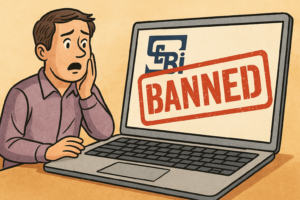Do you want to learn how does Amazon make money? In this article, we decode the depths of the Amazon Business Model to help you learn how Jeff Bezos has built a business empire.
Amazon, one of the world’s most valuable and influential companies, has transformed the way we shop, read, and consume digital content. In this blog post, we will explore the business model of Amazon using Alexander Osterwalder’s Business Model Canvas as a framework. The Business Model Canvas is a visual tool used to help entrepreneurs create a value proposition, understand their customers, and design a sustainable and scalable business. By dissecting Amazon’s business model, we hope to provide valuable insights for aspiring entrepreneurs and business enthusiasts alike.
The Amazon Story
Amazon was founded in 1994 by Jeff Bezos, an entrepreneur with a background in computer science and electrical engineering. After graduating from Princeton University in 1986, Bezos worked in various roles at tech companies and investment firms. In 1994, he left his lucrative job at an investment management company to pursue the idea of starting an online bookstore.
The decision to sell books online was influenced by several factors, including the growth of the internet and the vast number of book titles available. Bezos believed that the internet’s potential for commerce was immense and largely untapped. As a result, Amazon.com was launched in 1995 as an online bookstore, offering more than a million titles to customers worldwide. Since then, the company has grown and expanded into various industries, including e-commerce, cloud computing, digital streaming, and artificial intelligence.
Business Model Canvas of Amazon
The Business Model Canvas, developed by Alexander Osterwalder and Yves Pigneur, is a visual template that helps businesses describe, design, and analyze their business models. The canvas consists of nine building blocks that cover the essential elements of a business model:
- Customer Segments
- Value Propositions
- Channels
- Customer Relationships
- Revenue Streams
- Key Resources
- Key Activities
- Key Partnerships
- Cost Structure
We will now analyze Amazon’s business model using each of these building blocks.
- Customer Segments
Amazon’s customer base is vast and diverse, serving individuals, businesses, and institutions worldwide. Amazon has segmented its customer base into several distinct groups:
a. Retail customers: Amazon offers millions of products, including books, electronics, clothing, and household items, to customers around the globe.
b. Sellers: Amazon’s Marketplace platform allows third-party sellers to sell their products on Amazon’s website, reaching millions of potential customers.
c. Developers: Amazon Web Services (AWS) provides a wide range of cloud computing services to developers, startups, and enterprises.
d. Content creators: Amazon provides a platform for authors, musicians, and filmmakers to publish and distribute their work through Kindle Direct Publishing, Amazon Music, and Amazon Video Direct.
e. Advertisers: Amazon Advertising enables businesses to target customers through various advertising solutions.
- Value Propositions
Amazon’s value proposition focuses on offering a vast selection of products at competitive prices, with fast and reliable delivery. The company’s core value propositions include:
a. Convenience: Amazon makes shopping easy and convenient for customers by offering a user-friendly interface, personalized recommendations, and quick checkout.
b. Selection: Amazon offers an enormous selection of products, from books to electronics, clothing, and more. This vast selection allows customers to find almost anything they need on the platform.
c. Price: Amazon strives to provide low prices, often undercutting brick-and-mortar retailers, and offers competitive pricing on third-party products.
d. Speed: Amazon’s fulfillment centers and sophisticated logistics systems enable fast and reliable delivery, with Amazon Prime members enjoying two-day shipping on eligible items.
e. Trust: Amazon has built a reputation for reliability, customer service, and secure transactions. The company’s A-to-z Guarantee ensures that customers can shop with confidence, knowing that they will receive the products they ordered or be eligible for a refund.
f. Innovation: Amazon continuously invests in new technologies and services, such as AWS, Alexa, and Amazon Go, to enhance the customer experience and offer added value.
- Channels
Amazon uses multiple channels to reach and serve its customers:
a. Online platform: Amazon’s primary channel is its e-commerce platform, where customers can browse, search, and purchase products.
b. Mobile app: Amazon’s mobile app allows customers to shop on the go and access features like barcode scanning and augmented reality.
c. Physical stores: Amazon operates brick-and-mortar stores, including Amazon Go, Amazon Books, and Whole Foods Market, which provide a physical shopping experience for customers.
d. Amazon Web Services: AWS provides cloud computing services to businesses and developers through a web-based interface.
e. Distribution and fulfillment centers: Amazon’s vast network of distribution and fulfillment centers ensures efficient and timely delivery of products to customers.
- Customer Relationships
Amazon’s customer relationships are built on trust, convenience, and personalized experiences. The company focuses on maintaining strong relationships through:
a. Personalization: Amazon uses algorithms and data analysis to provide personalized product recommendations and tailored marketing messages.
b. Customer service: Amazon’s customer service is available 24/7 to assist customers with inquiries, returns, and refunds.
c. Community engagement: Amazon encourages customer feedback through product reviews, ratings, and Q&A sections, fostering a sense of community and trust among users.
d. Amazon Prime: The Amazon Prime membership program offers exclusive benefits, including free shipping, access to digital content, and special discounts, fostering loyalty among customers.
- Revenue Streams
Amazon generates revenue through various streams, including:
a. Retail sales: Amazon earns revenue from the direct sale of products to customers.
b. Third-party seller fees: Amazon charges fees to third-party sellers for listing and selling products on its platform, as well as for using its fulfillment services.
c. Subscription services: Amazon generates recurring revenue from subscription services like Amazon Prime, Amazon Music Unlimited, and Kindle Unlimited.
d. Amazon Web Services: AWS generates revenue from usage-based fees for cloud computing services.
e. Advertising: Amazon earns advertising revenue from businesses that promote their products on the platform.
- Key Resources
Amazon’s key resources include:
a. Technology infrastructure: Amazon’s vast technology infrastructure, including its e-commerce platform, data centers, and logistics systems, is critical to its operations.
b. Intellectual property: Amazon’s patents, trademarks, and proprietary technologies, such as Alexa and Amazon Go, are vital to maintaining its competitive advantage.
c. Human resources: Amazon’s skilled workforce, including software engineers, data scientists, and logistics experts, drives innovation and operational efficiency.
d. Physical assets: Amazon’s distribution and fulfillment centers, as well as its brick-and-mortar stores, are essential for delivering products to customers.
- Key Activities
Amazon’s key activities involve:
a. E-commerce platform management: Amazon manages its online platform to ensure a seamless customer experience and efficient operations.
b. Logistics and supply chain management: Amazon optimizes its logistics and supply chain to minimize costs and deliver products quickly to customers.
c. Technology development: Amazon invests in research and development to create new products and services, as well as to improve existing offerings.
d. Marketing and advertising: Amazon promotes its products and services through various marketing channels, including search engine optimization, paid advertising, and social media.
- Key Partnerships
Amazon’s key partnerships include:
a. Suppliers: Amazon works with a vast network of suppliers to source products for its inventory and ensure competitive pricing.
b. Third-party sellers: Amazon partners with millions of third-party sellers who list and sell their products on its platform, contributing to its vast selection of offerings.
c. Content providers: Amazon collaborates with authors, musicians, filmmakers, and other content creators to distribute their work through its platforms.
d. Technology partners: Amazon partners with tech companies and developers to integrate its services, such as Alexa and AWS, into various applications and devices.
e. Shipping and logistics partners: Amazon works with shipping carriers and logistics providers to ensure efficient and timely delivery of products.
- Cost Structure
Amazon’s cost structure comprises several key components:
a. Inventory and warehousing: The cost of purchasing and storing inventory is significant, as Amazon aims to maintain a vast selection of products.
b. Fulfillment and shipping: Amazon incurs costs related to packaging, shipping, and handling customer orders.
c. Technology infrastructure: Amazon invests heavily in its technology infrastructure, including data centers, servers, and software development.
d. Marketing and advertising: Amazon spends on marketing and advertising to attract customers and promote its products and services.
e. Research and development: Amazon allocates resources to R&D to drive innovation and develop new products and services.
f. Personnel: Amazon incurs costs for salaries, benefits, and training for its large workforce.
Amazon’s success can be attributed to its relentless focus on customer experience, vast selection, competitive pricing, and constant innovation. By examining the company’s business model through Alexander Osterwalder’s Business Model Canvas, we can gain valuable insights into the strategies and resources that have allowed Amazon to become a global powerhouse.
For aspiring entrepreneurs, understanding Amazon’s business model can provide inspiration and guidance for building successful ventures. By focusing on customer needs, leveraging key partnerships, and continuously innovating, entrepreneurs can create value propositions that resonate with their target audience and lead to long-term success.
Did you know? Corporate teams like to use our coworking space in Bangalore.
Learn more about our coworking space on YouTube where we talk about a variety of topics including personal finance, entrepreneurship, business and life.
Did you know? We also have a private theatre in Bangalore.




